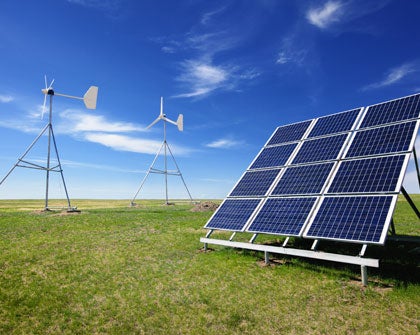Renewable energies (link in Spanish) are playing a growing role in the global economy thanks to their contribution to mitigating the impact of climate change and guaranteeing energy security. Wind and solar power also have vast potential as drivers for local industries, investment, and job creation. In 2014, global investment in renewable energy reached US$310 billion, and the sector accounts for 10.5 million direct jobs. According to Bloomberg Energy Finance, some US$2 billion of this total went to Mexico and US$1.2 billion to Chile.
China, Germany, the United States, Japan, and Spain are leaders in research into clean energy programs and the implementation of these through long-term state investment programs. This commitment is vital to developing new technologies (link in Spanish) and products and also to building local engineering skills and other capacities that will form part of the renewable energy value chain.
The production processes for renewable energies include a wide range of stages in which large numbers of people with different professional profiles are involved, together with private and public institutions and both domestic and foreign companies. In general, larger firms focus on essential activities and subcontract others to third parties who can offer a competitive advantage due to their specialization or location.
The life-cycle of a renewable energy project, from the initial idea to implementation, includes the following stages:
- Research and development
- Project development
- Engineering
- Manufacture of components
- Acquisitions
Financing, technology, and consulting are three key factors that affect each of these stages. They are also opportunities for creating added value and their potential depends on the level of development of each energy type in the different locations in question.
Who Develops a Project?
When these clean technology development initiatives are set in motion, most players in the value chains seek to become the project developer. Almost anyone can play this role: the government, a state-owned company, an investment fund, an investment bank, a private firm, etc.
The developer is a key figure who is responsible for ensuring that all the links in the value chain are optimized before obtaining financing and moving to the production phase. They also take on the risks associated with the necessary paperwork, permits, and monitoring of the different players. Most global projects have a financing structure that requires the contract to be with a company that is economically sound enough to shoulder the construction, acquisition of technology, and performance risks for the project. It is very difficult for local companies with no experience to fulfil these requirements, so they are usually subcontracted by more experienced players, during which time they acquire experience and build their financial reputation.
Operation and maintenance is an important part of the value chain because it is a source of long-term income. Generally speaking, the same engineering firm or one of its subsidies is responsible for the project in the first few years to ensure it is operating correctly. After this period, they will likely subcontract this role to a local firm.
Different Energy Sources
The manufacturing processes for components for solar and wind power are dissimilar and involve different levels of technological sophistication. The turbines for wind power projects (link in Spanish) require high quality industrial work and offer considerable employment opportunities that local contractors can leverage to create value. The high-tech components for these are usually produced in countries with high levels of research and development. New suppliers may be able to enter the sector by providing raw materials or components. For example, the construction of the blades for wind turbines requires a sophisticated steel processing industry. At an initial stage, local engineering firms can also handle tasks such as civil engineering works, the laying of electrical lines, building substations, and handling local government authorizations.
For solar power systems, local value creation is dependent on the involvement of local subcontractors. While high-tech components are mostly imported, basic raw materials or components can be supplied domestically, as can less complex systems, which can be produced at an earlier stage of technological development. Today’s global solar energy market is dominated by China, which has the most production facilities and is home to over 10,000 firms that are active in the sector. In 2010, the year for which the most recent statistics are available, the People’s Republic of China and China Taipei together accounted for 62% of the global output of solar cells.




